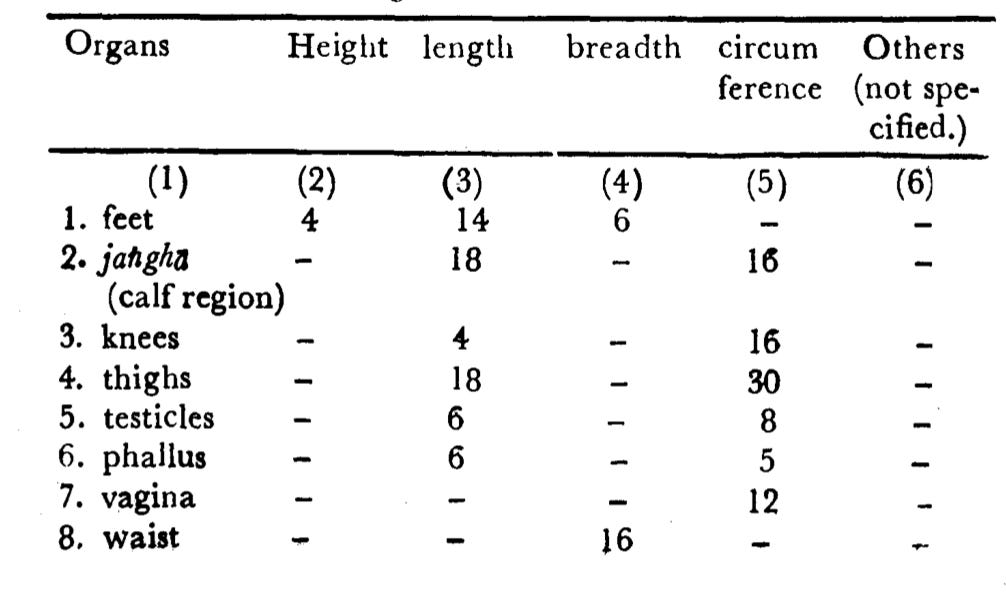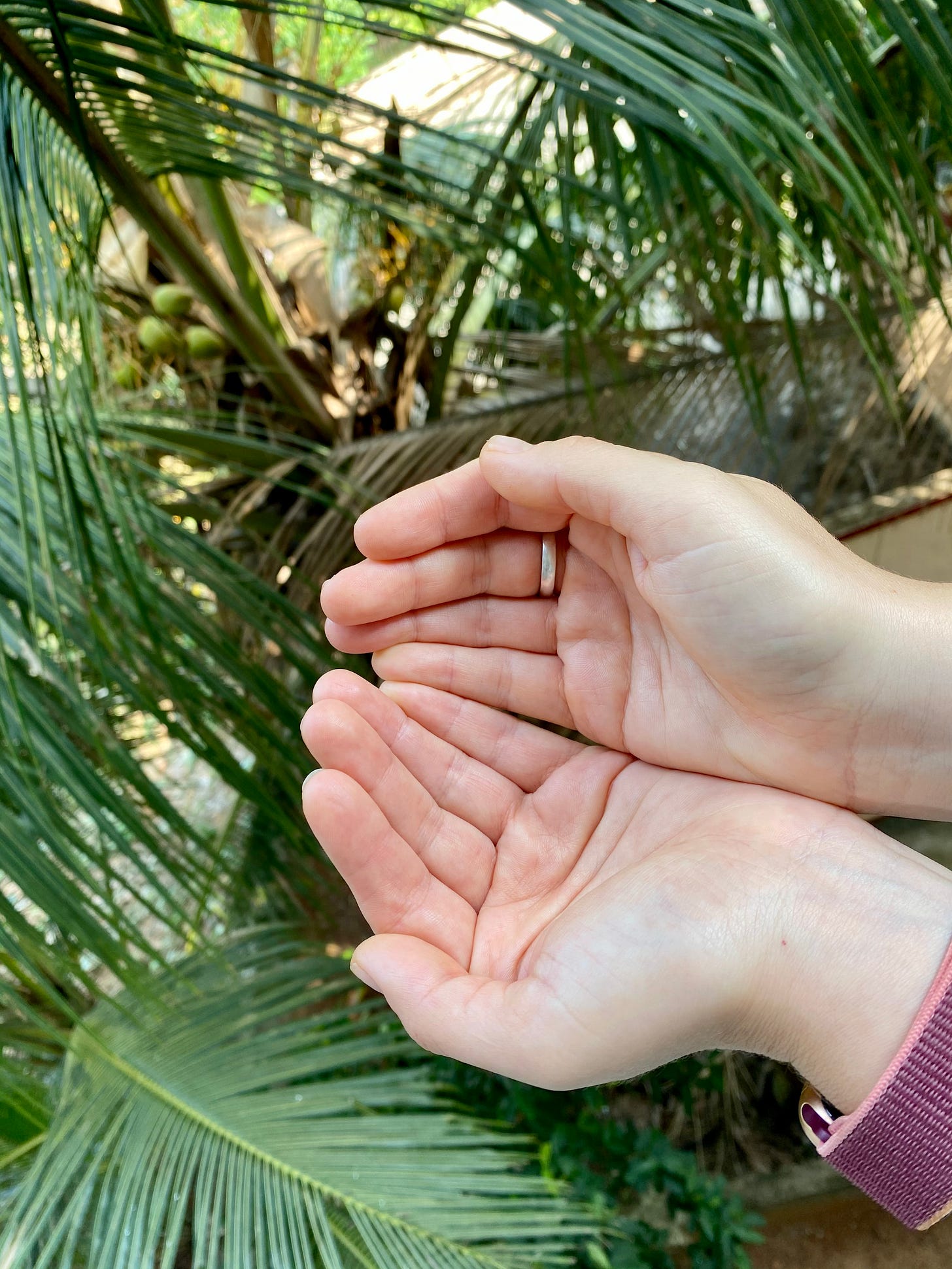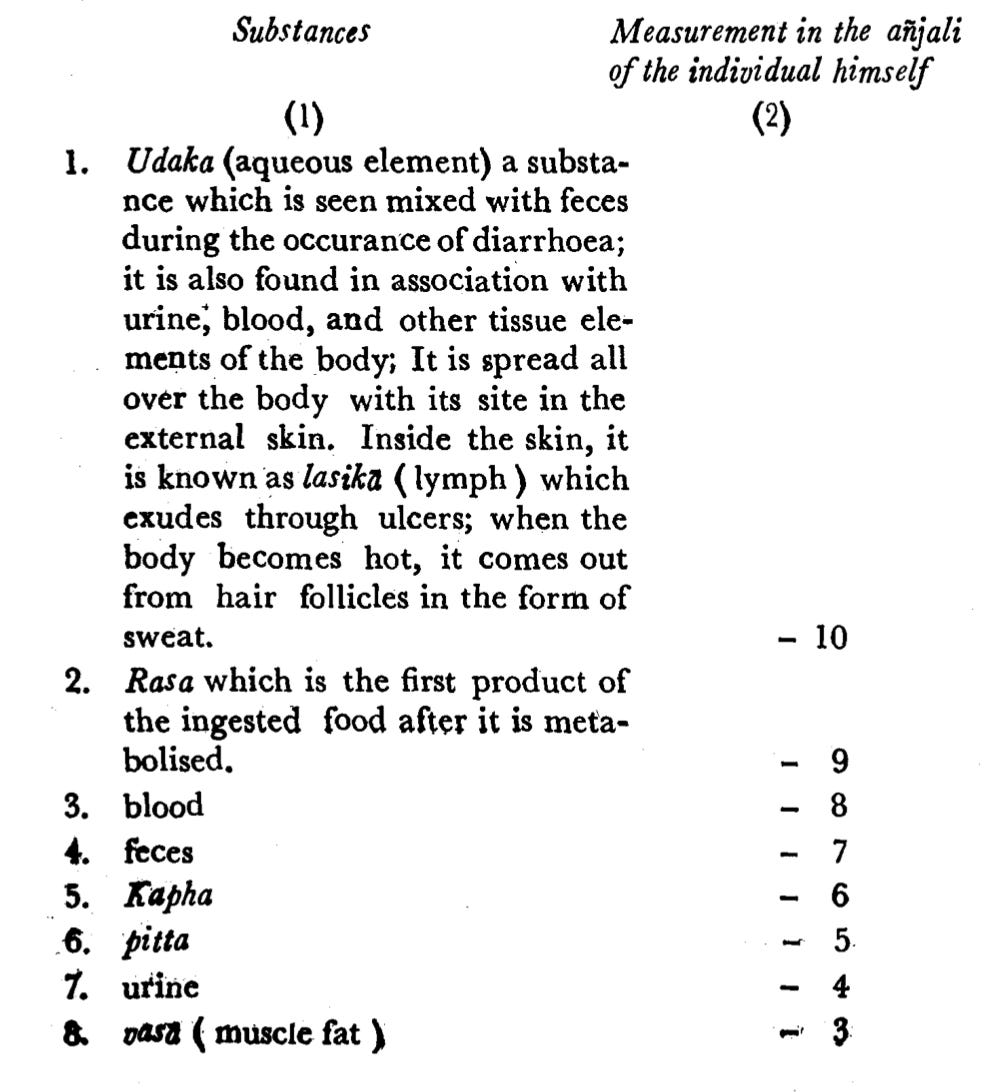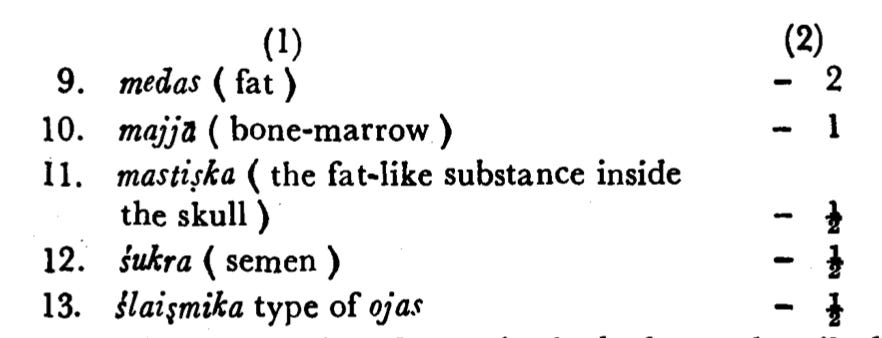Aṅgula vs Aṅguli vs Añjali
Using your hands and fingers for body measurements in Ayurveda!
Instead of a medical measurement system based on statistical averages like we’re used to in Western Medicine (average weight, average height, average BMI, etc), Ayurveda has a genius way of measuring the human body that is extremely personal. Based on each person’s own fingers and hands!
Aṅgula
In Charaka Samhita, Vimanasthana, Ch 8.117 there is a chart explaining the measurements of different body organs!
Starting with the feet and ending at the head. You can view the full chart here.
One unit in this chart is an aṅgula (अङ्गुल) - 1 Index Finger Breadth of the Individual. Here is mine outlined in red:
To use this chart, take a string and measure what it says (e.g. the length of your foot). Then put the measured string on the table (marking how much you measured) and alternate fingers to see how many aṅgula it is! Here is an example measuring the length of an iPad:
Now, my teacher Dr. Satyajith Kadkol does the measurement with his fingers:
Notice how we each get different lengths! That is the beauty of Aṅgula Pramana. The measurements of our body in Ayurveda are “standard” in terms of our own very unique index finger breadth! So just by measuring the breadth of your index finger (in cm let’s say), you can design a full t-shirt with accurate body measurements for each person based on the above body parts chart!
Try measuring your own body organs to check how accurate it is. Also try to measure your body parts with a different person’s index finger to see how only your fingers can measure your body accurately!
Aṅguli
An aṅguli (अङ्गुलि) is a measurement unit based on the length of your index finger:
I haven’t been able to find the exact reference where this is used, but I believe it is used in Marma (Ayurvedic Acupressure Points system) to measure out where the different pressure points are on each individual based on their own aṅguli. I’ll update this blog post when I stumble on a reference example!
Añjali
Añjali (अञ्जलि) is a volume measurement taken when you make a bowl from with your two hands:
This can be used to measure how much food to eat (2 añjali) or water to drink (1 añjali) per meal.
In terms of body measurements, the liquid constituents of a person’s body in añjali are mentioned in Charaka Samhita, Sarirasthana, Ch 7.15:
It’s truly incredible that these ancient Ayurvedic wisemen were able to notice how our hands are related to the proportions of everything else in our body and use that as a very personal standard of measurement for each individual. Try it out and see for yourself!







